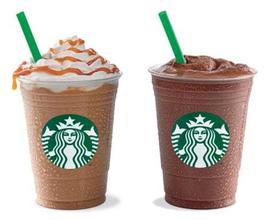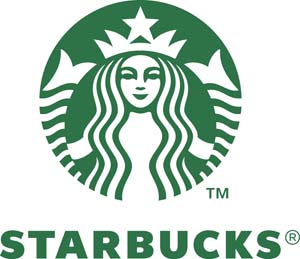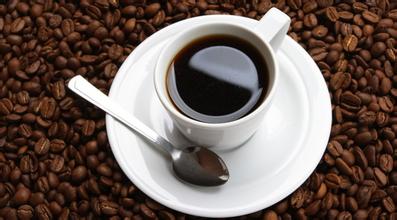Starbucks News Coffee Network News latest Coffee News Why does Starbucks dream of breaking the tea chain?
Why did Starbucks break the tea chain?
"Chinese and Foreign Management" magazine 2016-03-14 08:42:42 Internet + Innovation Starbucks Reading (83) Review (0)
Disclaimer: this article was written by the author stationed on Sohu's public platform. Except for Sohu's official account, the views only represent the author himself, not Sohu's position. Report
Starbucks' Teavana Tea Bar was once regarded as the weather vane of fashionable tea. But there is only one "experimental store" left in two years. What brand rules are contained in this case?
"Chinese and Foreign Management" Wechat account: zwgl1991
Text / special correspondent Li Jing translation / Zhang Yun responsible editor / Zhu Li
In October 2013, Starbucks opened its first new tea bar in New York, Teavana Tea Bar, which was once regarded by the tea industry as a fashion vane for tea. As a result, two years later, Starbucks recently announced that it would close four of its five Teavana Tea Bar stores and keep only one "experimental store" in Seattle.
Starbucks, as the number one brand of the global coffee chain, to develop a tea chain brand, sounds like a typical "relevance diversification". Even Starbucks founder Howard once said: there is a potential space of $90 billion in the tea market, and making tea is a "once-in-a-lifetime opportunity."
But why didn't Starbucks seize such an once-in-a-lifetime opportunity? Starbucks can't handle it, can other companies grasp it? With such doubts, Chinese and Foreign Management interviewed Laura Rhys, a master of positioning theory.
Starbucks misjudged tea chain
"Chinese and Foreign Management": do you think the current failure of Teavana Tea Bar is that Howard misestimated the space of the tea market, or there is nothing wrong with this category, but there is something wrong with the specific development methods?
Laura Rhys: Howard made the mistake of equating tea with coffee. Just because there are many successful coffee chains in the United States (Starbucks, Donndole, Seattle's Best, Caribou, Peet's, etc.), but the success of coffee chains does not mean that tea chains will also be successful.
In the United States, coffee is recognized as a "heavy" drink, while tea is relatively light. In addition, coffee contains three or four times as much caffeine per ounce as the same amount of tea. This is one of the reasons why coffee chains do better in the morning, and office workers need a dose of caffeine to stay awake.
As a "heavy" drink, coffee is often bought separately. Many people in the United States have the habit of going out for a cup of coffee. As a result, you can often see people sitting in Starbucks restaurants drinking only one cup of coffee.
On the other hand, light tea is often consumed with other foods. In the United States, few people have the idea of going out for a cup of tea. It's not that people don't drink tea, but that tea is usually not consumed alone.
So it makes sense to focus on coffee chains with a cup of coffee, but tea chains that focus on a cup of tea don't make much sense in the United States.
Chinese and foreign management: is the tea market not worth opening up? What do you think should be paid special attention to in the marketing strategy if we open up the tea market?
Laura Reese: I don't think Starbucks should make tea. But if it wants to be a tea chain, maybe it should focus on food rather than tea.
Maybe the dessert chain makes more sense. Starbucks can focus on pies, cakes and snacks in its dessert chain. Consumers who order desserts usually order tea.
"Chinese and Foreign Management": looking back at the Starbucks brand, we may also face another question, that is, assuming that it has really done a good job of the tea brand, will it cause damage to the Starbucks brand?
Laura Rhys: not really. Even if a typical Starbucks restaurant delivers all its tea business to Teavana Tea Bar, the loss is small. I'm not sure about the sales of a typical Starbucks restaurant, but its tea sales account for only a small portion.
You seldom see consumers drinking tea in a coffee shop.
Social factors are one of the reasons for Starbucks' success. Howard once called Starbucks "the third space". Home is the first space, the workplace is the second space, after work, people will go to Starbucks to socialize.
Since coffee consumption in the US is three times that of tea, it seems that the vast majority of office workers will choose to socialize at Starbucks rather than Teavana Tea Bar after work, even if both chains sell coffee and tea at the same time.
Teavana's Roadmap for China
"Chinese and Foreign Management": a Starbucks spokesman said that Teavana's plan to enter Starbucks stores in China in 2016 remains unchanged, and the "coffee + tea" complex store may become the new mainstream ecology. Are you optimistic about this move?
Laura Reese: we have reservations about that. We think Starbucks will do better if it keeps its focus on coffee shop chains in the Chinese market. The combination of Teavana Tea Bar and Starbucks will only blur consumers' understanding of the chain brand.
On the other hand, Starbucks is likely to successfully launch a tea chain brand under the name Teavana Tea Bar in the Chinese market. But we don't know enough about the Chinese market to know how it will operate.
But we have no doubt about focus. Brands often succeed because they focus on a single concept.
Starbucks focuses on coffee. Teavana Tea Bar focuses on tea. In China, both brands are likely to succeed. But putting the two together violates one of the most basic principles of marketing-keeping the brand focused.
"Chinese and Foreign Management": it seems that Starbucks' decision makers take into account the developed tea culture in China and hope that Teavana Tea Bar can gain a market in China. What do you think of this marketing decision?
Laura Rhys: the next thing Starbucks has to do is analyze the Chinese market. What are the successful tea chain brands in China? Why did they succeed?
Then, what Starbucks needs to do is to make a difference from the existing tea chain.
The compound store of "coffee and tea" may be a dream.
"Chinese and Foreign Management": will the compound store of "coffee + tea" become the new mainstream ecology?
Laura Reese: not likely. If you look at today's global market, you will find that some countries are heavy coffee consumption markets and some countries are heavy tea consumption markets.
But almost no country consumes the same amount of coffee and tea. One of the two is more likely to dominate a regional market.
Therefore, it is meaningless for a brand to be recognized as "half and half". What is more meaningful is to focus on one of the coffee and tea.
Of course, like Starbucks, a brand can focus on coffee, but it still sells tea to a small number of consumers who prefer it.
"Chinese and Foreign Management": when many enterprises develop to a certain stage, like Howard, they will have the impulse to create new brands. What kind of advice do you usually give to this kind of entrepreneurs?
Laura Reese: start by narrowing the focus.
Every restaurant in the United States sells a lot of food as well as coffee. So Howard opened a coffee-only restaurant (of course, a typical Starbucks restaurant also sells some food, but the entire chain is clearly focused on coffee, and its coffee business accounts for 90% of the chain's revenue).
Then ask yourself, how can I make my new focus more important? What can I do to create a perception-what is my new concept that will revolutionize this category?
What Starbucks did was raise the price. A cup of Starbucks coffee costs two to three times as much as a traditional restaurant.
Zappos is an online clothing store that focuses on shoes. In order to highlight this focus business, it provides consumers with free postage service for return and exchange of goods. The brand slogan is "two-way free delivery". This means that consumers can buy a pair of shoes at Zappos, which they can try on at home and return them if they don't fit or don't like them. The round-trip logistics costs are borne by Zappos.
Zappos was so successful that it was acquired by Amazon for $1.2 billion.
In any successful brand planning, the first step is to "narrow the focus". Because you can't build a brand that represents everything. You can only build a brand that represents something.
(the translator is the general manager of Reese Partners (China) Marketing Strategy Consulting Co., Ltd.)
Source: Chinese and foreign management journals

Important Notice :
前街咖啡 FrontStreet Coffee has moved to new addredd:
FrontStreet Coffee Address: 315,Donghua East Road,GuangZhou
Tel:020 38364473
- Prev

Starbucks joining Starbucks Coffee franchise process how to join Starbucks Coffee
Starbucks is optimistic about the great potential of the Chinese market and is determined to develop in China for a long time. Since entering China in 1998, Starbucks has opened more than 430 stores in Greater China, including Hong Kong, Taiwan and Macau, of which about 200 are in the mainland. In September 2005, the company invested 40 million yuan to set up the Starbucks China Education Program, which is specially used to improve the education status in China.
- Next

Is drinking coffee really refreshing? The reason why drinking coffee is not refreshing Coffee and Health
Is drinking coffee really refreshing? There is a joke that said that the Yu Gong moved away from the mountain and angered the Jade Emperor. The Jade Emperor sent two immortals to sit on the Taihang and Wangwu er mountains, but the Yu Gong tried his best to remove them, so he turned to the wise old man for help. The wise old man took out a treasure and shook it a little, and the two gods were raised to the air. The foolish man asked what it was, and the wise old man said, "what treasure it is?"
Related
- What documents do you need to go through to open a coffee shop? coffee shop coffee shop certificate processing process
- How to purchase Coffee beans in small Cafe how to choose a suitable supplier for domestic Coffee supply Company
- How to drink Starbucks Fragrance White Coffee? how to make Australian White Coffee? what Italian coffee beans are recommended?
- The Story of Flora Coffee: the name of Flora Coffee Bean and the implication of the Flowers on Florna Coffee
- How much does a cup of coffee cost? How much is the profit of a cup of coffee? What is the profit of the coffee shop in a year?
- Yunnan small Coffee, known as "fragrant Coffee", introduces the characteristics of Alpine Arabica Coffee producing areas in Yunnan, China
- 2023 latest Starbucks full menu price list how much is a cup of Starbucks coffee what is better to drink the most popular hot and cold drinks recommended
- Starbucks different kinds of Coffee Price list Starbucks menu 2023 Top Ten Best drinks in Starbucks
- Starbucks Spring praise Comprehensive matching Coffee Bean theme Story Packaging implication and taste description
- The cost of a cup of coffee latte American coffee cost price and selling price

